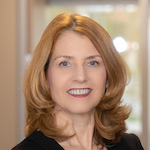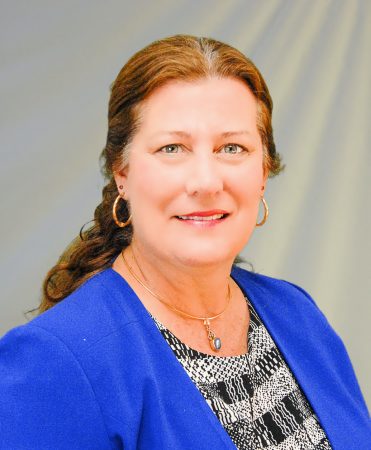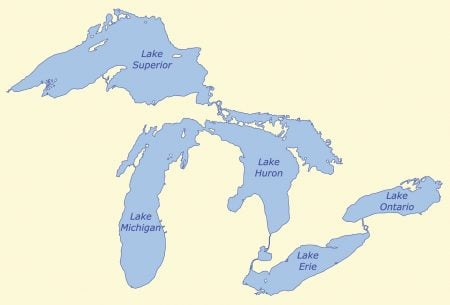
The Oakland County Times in a press release from the city of Farmington Hills, Michigan, announced Karen Mondora ’96 (B.S. Environmental Engineering) as the new assistant city manager. Mondora held positions in both the public and private sector, specializing in storm water management and municipal engineering. She participated in the Women’s Municipal Leadership Program through the Michigan Municipal league, aimed at training and preparing women for leadership positions in local government.

The Daily Mining Gazette and WNMU-FM mentioned Michigan Tech in a story about a $1 million scholarship fund for L’Anse graduates established by Franklin St. John ’60 ’99 (B.S. Metallurgical and Materials Engineering, Hon. Ph.D. Engineering). St. John went to Michigan Tech and worked as a metallurgist, then founded a company that manufactures botanical extracts, herbal formulas, and tea.

Lansing’s WLNS 6News and more than 130 outlets worldwide ran stories about Ken Engquist ‘93 (BS Mechanical Engineering) being named to the board of directors of Intrepid Metals. Engquist oversees the de-risking and advancement of mining projects from early-stage exploration through start-up and operations of surface and underground mines.

Newswise mentioned Michigan Tech in a story about the first histotripsy device approved by the FDA to treat liver cancer. The device, named Edison, was developed by Eli Vlaisavljevich ’10 (B.S. Biomedical Engineering) in collaboration with the University of Michigan and private medical device company HistoSonics. Histotripsy, a novel therapeutic technique, targets and destroys diseased tissues. Vlaisavljevich and his team are currently leading large projects to advance histotripsy for the treatment of other cancers.

WLUC TV6 published a tribute story remembering Ray Kestner ’55 (B.S. Civil Engineering), who died Nov. 7. Kestner was a recipient of MTU’s Distinguished Service Award in 1988. He met his wife Janet at Tech, and their seven children were Huskies as well. He is credited as being the visionary responsible for the revitalization of Houghton which resulted in the city receiving the Community of Excellence Award from the State of Michigan.

Building Design+Construction included Robyn Niss ’06 (B.S. Civil Engineering) among their 40 Under 40 Class of 2023. Niss is the vice president of engineering firm Kimley-Horn of Virginia Beach, Virginia. Robyn is most proud of her firm’s work designing five schools simultaneously for Norfolk Public Schools. She has contributed to more than 50 K-12 projects, including new schools, significant modernizations, and sizable expansions.

CULTURS Magazine and Stellantis Media profiled Aurora White ’16 (B.S. Mechanical Engineering), who was selected by the American Indian Science and Engineering Society (AISES) as its 2023 Most Promising Engineer. White, currently a torque calibration security engineer for Stellantis, is an active member of the Lac Vieux Desert Band of Lake Superior Chippewa Indians. White was a member of AISES, Engineering Ambassadors and Women’s Leadership Council while attending Michigan Tech.

Julie A. Fream ’83 (B.S. Chemical Engineering) was appointed to the board of directors for Blue Bird, a manufacturer of electric and low-emission school buses. Fream is the founding chair of the Board of Directors for Corewell Health, a $14 billion healthcare system formed in 2022. From 2011 to 2018, she served an eight-year term as a governor-appointed trustee for Michigan Tech. From 2014 to 2016, Fream served as chair of the Michigan Tech Board of Trustees.

Civil Engineering alumnus Ryan Sherman ’07 recently presented the prestigious 2023 Robert J. Dexter Memorial Award Lecture on “Evaluation of Steel Additive Manufacturing Experimental Results.” The Robert J. Dexter Memorial Award Lecture is a significant honor, recognizing Sherman’s outstanding contributions to structural engineering, particularly in the domain of steel bridge research. Currently an assistant professor at the Georgia Institute of Technology, specializing in the School of Civil and Environmental Engineering, his work involves large-scale laboratory testing, field monitoring and instrumentation projects on steel bridges and related highway structures throughout the United States.

Circuit Assembly mentioned a presentation by HongWen Zhang ’06 (Ph.D. Materials Science and Engineering) at the SMTA Empire Expo & Tech Forum September 26, 2023, in Syracuse, New York. Zhang is the principal research metallurgist and an R&D manager at Indium Corporation. Zhang’s research focus is on the development of Pb-free solder materials and the associated technologies for high-temperature and high-reliability applications. The title of his talk is titled A Bismuth-Free In-Containing Lower Temperature Lead-Free Solder Paste for Wafer-Level Package Application that Outperforms SAC305.

Polaris published an employee spotlight interview with alumna “Korinne C.,” rider safety manager for off-road vehicles and snow, in “People Behind Polaris”. Korinne earned her bachelor’s in mechanical engineering at Tech. She worked as a powertrain project engineer and ATV instructor, as well as helping to establish and develop the SxS training program for employees. Korinne mentioned using Michigan Tech’s snowmobile parking lot, which allowed her to ride her Polaris Edge 600 to class. The experience grew her passion for riding and working in powersports.

WLUC TV6 aired an interview with entrepreneur Jacob Soter ’19 ’20 (B.S. Electrical and Computer Engineering, MBA), founder of SwimSmart. The company’s initial product—a traffic light-esque beach warning system to communicate water safety—was the subject of a 2021 Michigan Tech News story. The technology uses a multi-colored warning system to connect with the National Weather Service to create a safe and reliable environment in both community and remote beaches.

MLive featured a story on the incoming director of the Washtenaw County Road Commission: Matthew MacDonell ’98 (B.S. Civil Engineering). With some 17 years of experience in the Washtenaw County transportation agency, MacDonell will transition into the role in October. MacDonell joined the road commission in 2006 as a supervisor in the engineering department, which he now oversees, including managing design and construction, permits, traffic and safety and geographic information systems.
















